Menus
- Half Italian
- Laverda LZ 125 won over the audience straight away
- The plan went well
- The engine sound sounds familiar
- Shift travel still uncomfortably long
- Long live the German-Italian friendship
- Opinion of the owner Friedrich W. Mertens
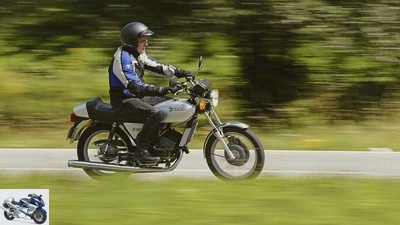
Stefan Wolf
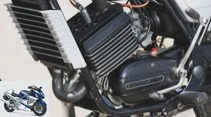

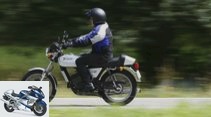
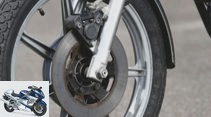
10 photos

Stefan Wolf
1/10
Laverda LZ 125
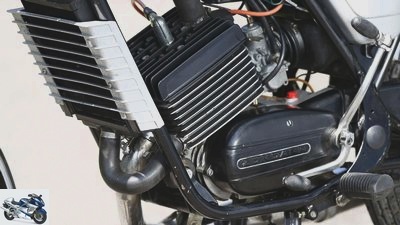
Stefan Wolf
2/10
In spite of the water cooling, the Zundapp cylinder is beautifully ribbed
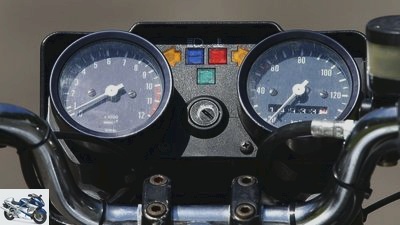
Stefan Wolf
3/10
Zundapp standard: the VDO cockpit with fidgeting needles and pale lights
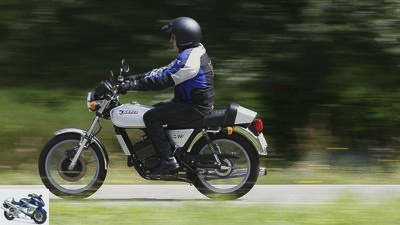
Stefan Wolf
4/10
Laverda LZ 125
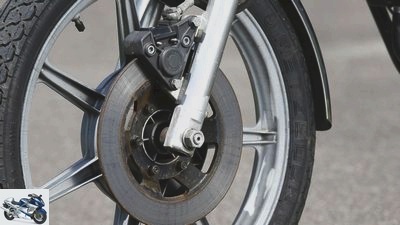
Stefan Wolf
5/10
The once praised Grimeca disc brake has lost some of its bite over the years.
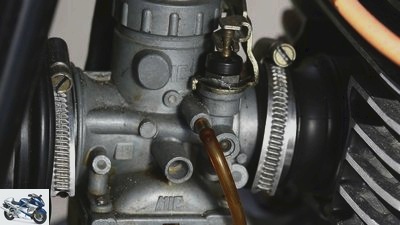
Stefan Wolf
6/10
The 28 mm Mikuni carburettors are also part of the proven Zundapp overall package
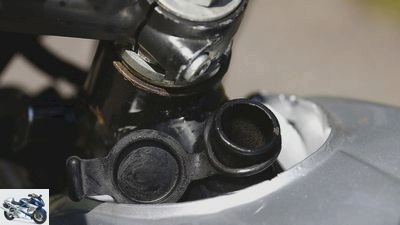
Stefan Wolf
7/10
Clever: two-stroke oil tank in the central frame tube, with a tap under the tank. The replenishment for the mixture lubrication is always on board
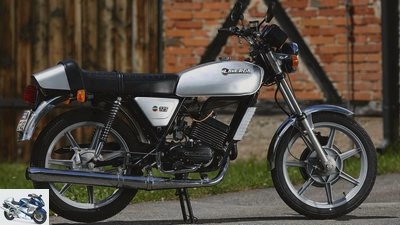
Stefan Wolf
8/10
Laverda LZ 125
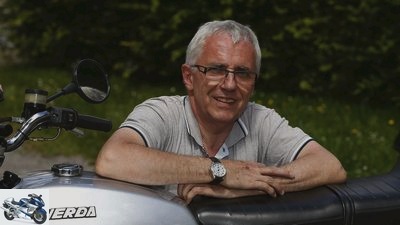
Stefan Wolf
9/10
Friedrich W. Mertens – owner of the Laverda LZ 125
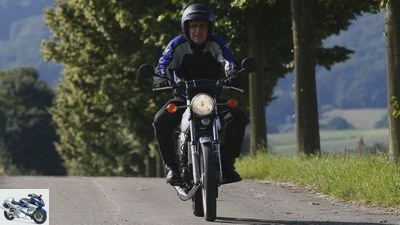
Stefan Wolf
10/10
Laverda LZ 125.
On the move with the Laverda LZ 125
Half Italian
Content of
The Laverda brothers Massimo and Piero hatched the plan in 1977 to build a 125 – with a stable, water-cooled Zundapp engine. Once a great success in Italy, the Laverda LZ 125 is rare in this country. A trip with the beautiful German-Italian woman.
Germany versus Italy – a classic in football. Most recently, Germany was able to record a 7: 6 victory at the EM. Germany with Italy, so in close cooperation? Yes, there is and was there as early as the late 1970s, like that L.averda LZ 125 clearly proves it. For a very simple reason: Laverda wanted to play in the lucrative 125cc market and had the vision of an eight-liter bike with a powerful and reliable engine, combined with a modern, sporty design. The engine was believed to have been found in the 125 cc two-stroke engine from Zundapp: It was water-cooled, but with its generous ribs looked like air-cooling, delivered a stable 17 hp and the necessary exclusivity.
Buy complete article
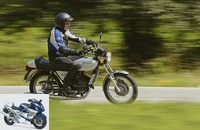
On the move with the Laverda LZ 125
Half Italian
Time was of the essence
The Zundapp engines were particularly noticeable to Massimo, who was amazed at the German vacationer boys who had crashed full throttle on their Zundapp all the way to the Adriatic without any problems with jammed or burned pistons. So in June 1977 Massimo and Piero Laverda made a detour via Munich on their way back from Holland to Italy to explain their plan to Zundapp. The deal was put in place on the same day, the engine delivery made clear, but time was of the essence – the new Laverda LZ 125 was to be presented at the exhibition in Milan in November.
Laverda LZ 125 won over the audience straight away
Laverda achieved the almost impossible, and the Laverda LZ 125 immediately won over audiences and critics. Shortly afterwards, the LZ (which stands for Laverda-Zundapp, of course) went on sale at a price of just under 1.2 million lire (at that time a good 3,400 marks). From 1977 to 1984, around 20,000 copies of the Standard, Sport (with lamp cover), Elegant (in the black and gold John Player look) and Custom versions were sold. While Zundapp did not offer the water-cooled KS 125 in Germany (it was only sold in Switzerland) and instead offered a drilled version as the KS 175, the 175, which Laverda also offered in Italy, was not a great success: a total of only 4,000 of the LZ 175 found one Buyers.
The plan went well
The Laverda brothers’ plan nevertheless worked out with the Laverda LZ 125: The self-designed double loop frame was supplemented with Grimeca cast wheels and a non-adjustable 32-millimeter Marzocchi fork as well as two pre-tensionable Sebac spring struts and steel swing arm. In addition to the engine (including gearbox), Zundapp also took over the ignition, carburetor, radiator, air filter, fittings, handles, taillights, indicators and exhaust. The Italians insisted on a practical finesse when designing the frame: The thick central tube also serves as a container for the oil supply of the – yes, actually! – Mixture lubrication. Thanks to the supplied hose, which can be screwed onto a nozzle, the required amount of two-stroke oil can be drawn off using the “tap” and added to the fuel.
The engine sound sounds familiar
We don’t have to test it for now because owner Friedrich W. Mertens refueled the Laverda LZ 125 for the trip. The 60-year-old bought the LZ a good three years ago, rather by chance he came across the 125cc model through contact with Laverda friends in Rohrdorf. When I jump into the saddle of the elegant Italian, the engine is already warm from the drive to the agreed meeting point, so there is no cold start procedure. From the driver’s point of view, everything is very reminiscent of the good old 50s and 80s models from Zundapp: the handlebar fittings, the tidy VDO cockpit. Even the engine sound sounds familiar, a bit bassier, due to the larger displacement, but well muffled by the water jacket, but with a pithy, pressed, sawing sound from the long exhaust pipe.
Shift travel still uncomfortably long
As soon as the first gear is engaged, however, memories of the small inadequacies of almost all old Zundapps are awakened: the five-speed draw-wedge gearbox calls for a decisive step when engaging the gears, and the shifting travel is still uncomfortably long. So don’t shift too hectically and forcefully without losing too much momentum, because the speed range is relatively narrow. Strolling is of course also possible from 2,500 rpm on the level. Should it go ahead or up the mountain, the speed should be kept above 6,000 rpm, wherever possible, where the Laverda LZ 125 only develops the bite that is worthy of a two-stroke engine. From this mark on, the revs go up, but the revving quickly ends, from 7,500 it gets tougher, turning over 8,000 revs is hardly possible and doesn’t bring much, early, decisive gear changes are the order of the day. The fine, but clearly noticeable vibrations set in earlier, namely from 5,000 rpm.
Long live the German-Italian friendship
There is nothing wrong with the sitting posture with relaxed leg posture and the successful shape and offset of the handlebars. And because the knees fit on the tank, which is not too slim, and the Laverda LZ 125 rolls on narrow (front 2.50, rear 3.00) 18-inch wheels and weighs only 108 kilos, it turns out to be a light-footed, cheeky corner wetter. A bit of caution is advised with optimistic (late) braking maneuvers – the actually generously dimensioned 260 mm disc brake responds somewhat bluntly and doesn’t seem quite as snappy as expected. Fortunately, the rear drum brake is astonishingly effective. I take it for granted that the Laverda chassis doesn’t show any nakedness even on undulating country roads in view of a top speed of 120 km / h. And you have also learned to read the wriggling hands over the years – simply estimating the mean value between the deflections is fine. In the end, she caught me too, the fascination of being able to rely on proven Zundapp technology and yet driving an exotic Italian. Long live the German-Italian friendship – 2-0 for Laverda.
Opinion of the owner Friedrich W. Mertens
Stefan Wolf
Friedrich W. Mertens – owner of the Laverda LZ 125.
I came across the Laverda LZ 125 by chance, but the elegance of the Laverda, combined with solid Zundapp technology, appealed to me. Even if I haven’t covered too many kilometers with her, I always have a lot of fun with her. The two-stroke bite and the light-footedness set an opposite pole to the comfort of my 125 four-stroke chopper. In addition, the Italian offers a dash of exclusivity, as a Laverda Zundapp is truly not on every street corner.
Related articles
-
Comparison test Laverda 750 S against Yamaha TRX 850
Comparative test Laverda 750 S against Yamaha TRX 850 Consequence of parallel twins among themselves: with a starting lead in front of Yamaha’s TRX 850, on …
-
Comparison test of two-cylinder: Ducati 750 Sport, Laverda 750 SF and Moto Guzzi 750 S
29 pictures 1/29 Twin and away: The Ducati 750 Sport, Laverda 750 SF and Moto Guzzi 750 S in a comparison test. 2/29 Your …
-
On the move with the Honda MVX 250 F.
Wolf 29 pictures Wolf 1/29 The MVX was not a big seller, but the speedster with the V3 engine is still a lot of fun. Wolf 2/29 Wolf 3/29 Wolf …
-
On the move with the Maico MD 50
Wolf 27 pictures Wolf 1/27 Wolf 2/27 Wolf 3/27 Wolf 4/27 Wolf 5/27 Wolf 6/27 Wolf 7/27 Wolf 8/27 Wolf 9/27 Wolf 10/27 Wolf 11/27 Wolf 12 / 27 Wolf 13/27 Wolf …
-
wolf On the move: Hercules K 125 T The Nurnbergerle Content of At that time the Hercules K 125 T was light home cooking; if not exactly the dream…
-
Presentation: Laverda 750 First Contact The development of the new Laverda Twin with water cooling is in the final stages. Shortly before the start of production …
-
Review Laverda 750 S Wet and happy New, water-cooled two-cylinder, stable, proven aluminum frame, low weight. Great starting point for a classy sports…
-
On the move: the Honda VF 500 F II and Yamaha RD 500 LC
fact On the move: Honda VF 500 F II and Yamaha RD 500 LC Extreme athletes Contents from the beginning of 1984, the Honda VF 500 F II and Yamaha RD 500 LC …
-
Laverda 500 Alpino and Yamaha XS 500
bilski-fotografie.de 22 pictures bilski-fotografie.de 1/22 Laverda 500 Alpino I Yamaha XS 500 on the move. bilski-fotografie.de 2/22 Sporty-Italian …
-
Short review Laverda 668 Alta moda Laverda 668: Italian chic for those special moments in life. It seems done. A new name gives the …